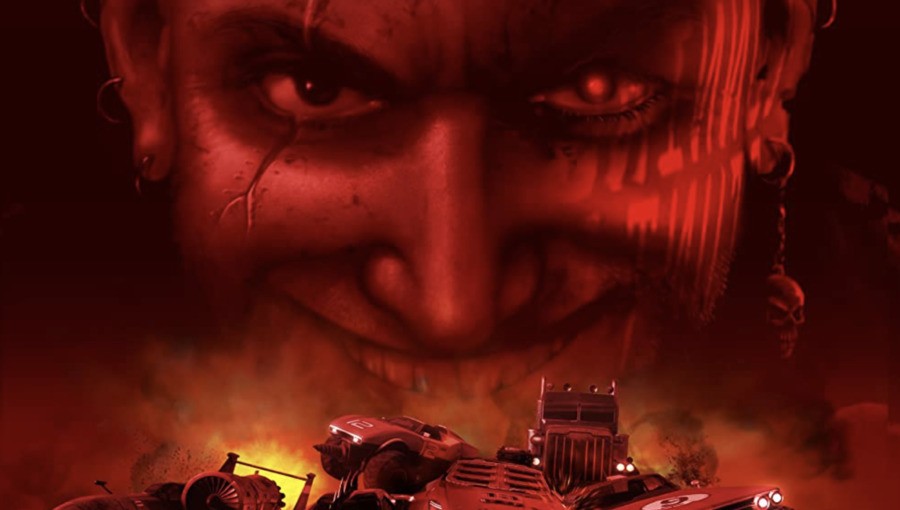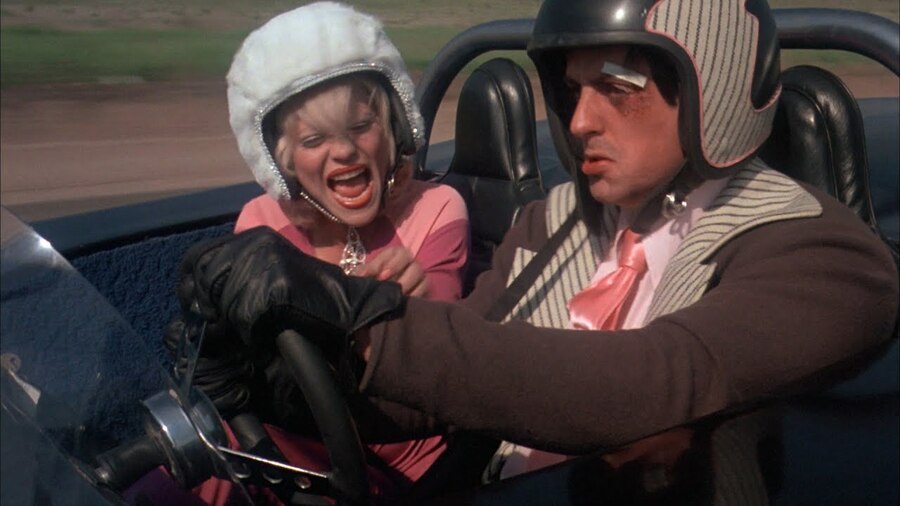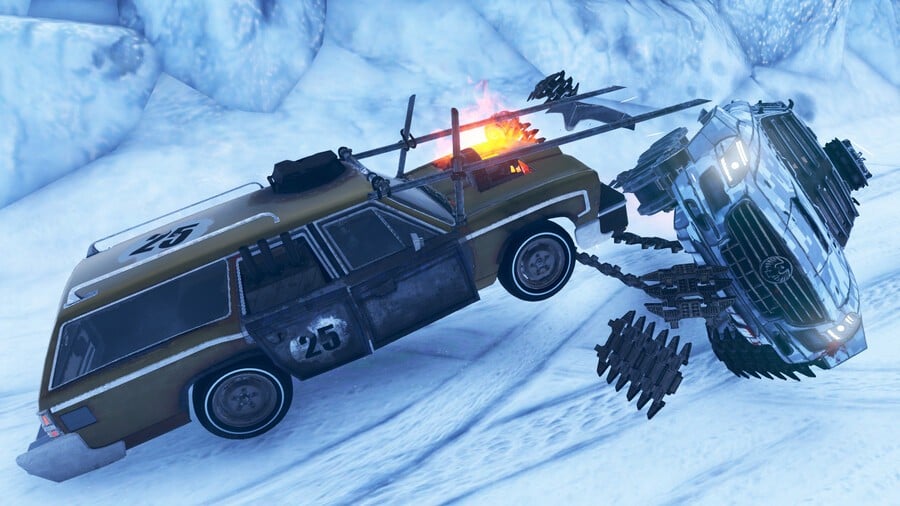
When gamers think of Carmageddon, they tend to think about the intense censorship battle with the British Board of Film Classification. What's often forgotten is the reason why it was so popular; not only was Stainless Games' gloriously violent open-world racing game an absolute blast to play, it pioneered player choice and physics in ways that arguably changed video games forever.
It was the first game where the player decided how to play it, and the game was quite happy with that – it left the choice entirely in the player's hands
"Nobody had ever created a car game where the idea was to crash on purpose before," Stainless Games SEO Patrick Buckland tells us. "That was the core idea, along with the general axiom of the game never telling you off for doing the wrong thing. It was the first game where the player decided how to play it, and the game was quite happy with that – it left the choice entirely in the player's hands."
Throughout its development at Stainless Games' offices on the Isle of Wight off the south coast of England, Carmageddon went through several thematic changes. After initially being pitched as a pure Destruction Derby game, publisher Sales Curve Interactive (or SCi) – a fan of using licenses – wanted to slap one onto it.
"Initially, the plan was to make it a Mad Max game, but after difficulties finding the parties that owned the rights to it, SCI instead pitched it as a tie-in for a new Death Race Film, Death Race 2020," Buckland explains. "When this got canned, the publisher finally let the game stand on its own two feet without a license. We didn't mind as long as the core pillars of the game remained. The MS-DOS executable was still called DETHRACE.EXE when it shipped."

The brief association with the Death Race movie series actually resulted in one of Carmageddon's unique gameplay hooks. "The idea of running over pedestrians into the game... they were not in the original pitch. But the film got canned during development. By this time, however, our game was well underway and was already great fun and defining new boundaries, so SCi decided it could be its own brand."
We had always planned to do better physics than anybody else, and our demo was already state-of-the-art, thanks to my old A-level Maths teacher helping me with the collision mechanics
What makes Carmageddon stand out from the competition – as it still does, some 25 years later – is its first-of-its-kind 3D physics engine created by Dr Kev Martin, which was even cited in brochures for the Havok engine in the early 2000s. "Nobody had ever done it before, let alone in multiplayer," says Buckland. "A few games had touched on it before – Vette on the Mac, the Papyrus Nascar game, even Pinball Construction Set on the Apple – but only in 2D. We were the first to do proper, solid-body three-dimensional physics, with proper perfect collisions and conservation of angular momentum. We had always planned to do better physics than anybody else, and our demo was already state-of-the-art, thanks to my old A-level Maths teacher helping me with the collision mechanics. But what Kev did was take it to a whole new level."
The developers of Carmageddon craved impact; this was what would make the game stand out from the crowd, they argued. "We wanted the collisions to feel real," continues Buckland. "And the only way of doing that was to link into the player's subconscious by making things react the right way; even though the player didn't realise it, we were tapping into a primordial sense of the brain. It's why humans can play racquet sports or football and cricket. Our brains instinctively know where that ball or shuttlecock is going. By making the game work to these rules of physics, in every way, it tapped into the player's brain. This was not by accident, it was part of the original design."
However, creating physics that would successfully tap into players' reptilian minds so they would react instinctively presented the small team of eight with several challenges. "Keeping the frame rate high enough was difficult, especially as BRender [the Argonaut-made engine the game runs in] was not the fastest rendering engine," Buckland continues. "But it had the best API, which is why we chose it. BRender was written by gamers for gamers, unlike Renderware and Rendermorphics, its main competitors at the time. Initially, we were going to write our own 3D engine, but it took so long to get the contract signed our 3D rendering engineer took a job elsewhere."
The ability to push a physics object along with another one without it juddering or wobbling is something even now most engines don't do
Despite using an off-the-shelf engine as opposed to its own in-house one, Stainless Games was breaking new ground. "The maths for resolving collisions was very hard, as was finding a way to detect collisions properly," Buckland recalls. "The ability to push a physics object along with another one without it juddering or wobbling is something even now most engines don't do. Then there was the problem of implementing it so that it worked on machines as slow as 60MHz Pentiums. Mathematical stability was also another issue. It's something that most physics engines still don't get right, even today; physics objects twitch and flick about or sometimes fire into the sky for no reason. We've all seen it. Kev solved these problems right out of the gate in 1996."
Dr Kev Martin's physics engine, although more than two decades old, also allows random objects within the game world – like garden furniture – to respond to impacts, something many modern physics engines still can't achieve. "Kev created a clever system whereby ordinarily static props became physics objects Just-in-Time when another physics object came near them, just in case it might hit them," says Buckland. "It allowed so much more of the world to be more dynamic, and this is something you still rarely see."
It's undoubtedly a challenge developing new technology while creating a game, and this is something the team at Stainless would encounter again during the development of 2015's Carmageddon: Reincarnation, which saw the team build a new rendering engine while working on the game. "However, it's so much easier than using middleware when you can wander over the room and talk to the person who wrote the code," Buckland says. "You can debug it properly, plus it is constructed perfectly to your specifications, which also helps with finetuning and improving gameplay. Timing is always an issue, especially in a commercial environment. You cannot just sit in a darkened room and finish the engine before the development of the game starts."
It was a total bug in Kev's code, where objects would gain energy from collisions rather than losing it. But it was instantly hilarious, so we tidied the bug up, added the sound effect, and turned it into a power-up
Aside from its penchant for vehicular manslaughter, the thing most gamers remember about Carmageddon was its incredible power-ups. Most of these started their lives as funny bugs – but, being a pragmatic bunch, rather than attempting to squash them, the team instead took them, cleaned them up, and made them part of the game. These included the 'Ped Harvester', which was the result of a pedestrian bug. The 'Electro-bastard Ray' was created after pedestrians died when a new part of the physics engine was turned on; the team added a few extra sounds and effects and made an electrifying new power-up instead.
Then there was pinball mode, which saw cars, pedestrians, and everything else on the screen ricochet around the map with reckless abandon. "It was a total bug in Kev's code, where objects would gain energy from collisions rather than losing it," laughs Buckland. "But it was instantly hilarious, so we tidied the bug up, added the sound effect, and turned it into a power-up."
One of the most charming aspects of Carmageddon was the pedestrians and wildlife that populated every level. These were brought to life by drawing the sprites onto simple physics objects and then using flipbook animation to make them run. A reference material for how pedestrians reacted when hit by a car was provided by Tony Taylor (who was also the model in the prat cam) by recording footage of him getting run over. "Tony was, and still is, quite indestructible," chuckles Buckland. "We repeatedly ran him over in a car park with my big old Chevy Caprice and filmed it so the artists had some reference material. Somebody called the police on us, who turned up to check out what the hell was going on. The movie camera on a tripod was a bit of a giveaway, and they left, shaking their heads in disbelief. He even went through the windscreen at one point when we hit him too hard. Unfortunately, the video camera was on the wrong setting, so the footage is all very grainy and not much use to anyone."
The choice to use sprites instead of 3D models was down to the lack of horsepower available to most commercial PCs at the time. However, this did not stop Stainless Games from attempting to innovate, and at one point, Carmageddon's pedestrians had full-ragdoll physics – but Buckland said it felt like a step too far. "For Carmageddon II, we upgraded them to 3D models, but sprites made it all more cartoony and fun, so in a way, I think the original Carmageddon had more charm. Kev had full ragdoll physics working during the development of the Splat Pack in the summer of 1997 – way ahead of anybody else. But when we tried them in the game, we felt they looked too realistic and were slightly sickening to watch. We never wanted that – we wanted to be funny, not sick. Nowadays, every game has ragdoll physics, so we are all desensitised to it, but in 1997 it felt like a step too far, so we sat on the technology.”
The last thing that came together was making the game fun to play for longer than 30 seconds of novelty value. "Carmageddon was one of the very first sandbox designs with the player able to do what they wanted," adds Buckland. "But it soon emerged from testing that this left players with a feeling of not knowing what to do. A totally-clean slate isn't fun. So we decided late in development to put the race structure in there to give players a sense of purpose – something to at least start doing, even if they then ignored it. This also dragged them around the environment, allowing them to notice things to get distracted by, and forced them to interact with other cars."
I did interviews at the time comparing it to Tom & Jerry; hitting somebody with a car was analogous to dropping an anvil on a cat's head
In the run-up to its release, Carmageddon was refused classification by the BBFC, a decision Buckland says was a big surprise to the team, as they thought the game was funny and full of Monty Python-style humour. "I did interviews at the time comparing it to Tom & Jerry; hitting somebody with a car was analogous to dropping an anvil on a cat's head. In real life, it's not funny in the slightest, but Tom & Jerry isn't real life."
It's fair to say that the BBFC disagreed. "SCi's offices got raided, and their CEO was threatened with jail," reveals Buckland. "I'm pleased to say the developers were buffered from all of this. We were told not to answer any questions from journalists, but in the end, it was aimed at the publisher, not us. It was all stupid – a failure of freedom of speech that we are supposed to enjoy. The tabloids then got their teeth into it and jumped on the bandwagon of indignity because it was banned."
This alone was enough to give Carmageddon that vital sheen of controversy that is essential when it comes to capturing the minds of players, but Buckland feels there was a downside to the furore. "Sure, it gave us free publicity, but one side of me has always thought it was a shame, as it made people over-focus on that side of the game rather than how much of a breakthrough it was in terms of game design and physics."
I simply made the game look for a file called something innocuous. If that file was present, the blood turned back on
The BBFC famously refused to certify the game unless all blood and gore was removed, and, under pressure, SCi acquiesced with the request, removing human bystanders and replacing them with zombies who exploded in a shower of green blood when hit. However, not long after the censored Carmaggedon’s release on June 20th, 1997, a mysterious blood patch that restored the game to its full uncensored glory appeared online. Rumours circulated for years that it was a member of the development team had made it. It turns out it was – and the publishers were in on it, too.
"I wrote it, and SCi were part of the plot," admits Buckland. "I simply made the game look for a file called something innocuous. If that file was present, the blood turned back on. The file itself was empty. The only thing the patch contained was this empty file – the game shipped with the code that looked for it already in it."

After a fierce legal battle that latest 10 months, the BBFC's decision was overturned, and Carmageddon was released as its makers intended. Ultimately though, the whole open-world genre and the complex physics of games today owe a huge debt to the efforts of a small group of devs from a sleepy island off the south coast of England. With Carmageddon, Stainless laid the groundwork for complex systems many of us take for granted today. "It was the first game that allowed you to go anywhere, in an environment big enough to get lost in, and tell you not to do X, Y or Z. In this way, it changed video games forever," concludes Buckland.
1998's Carmageddon II: Carpocalypse Now was popular enough to be ported to consoles such as the PlayStation, N64 and Game Boy Color. Torus Games would produce Carmageddon TDR 2000 in (fittingly enough) 2000, and this would be the last game in the series until 2015's aforementioned Carmageddon: Reincarnation. The rights to the brand ended up at Square Enix thanks to the fact that SCi merged with publisher Eidos in 2005; Eidos was gobbled up by Square Enix in 2009. Stainless managed to reacquire the Carmageddon name in 2011, paving the way for the $625,143 crowdfunding campaign that would fund Reincarnation on PC. The game was then released in an updated form on PS4 and Xbox One under the title Carmageddon: Max Damage. I
n 2018, THQ Nordic purchased the rights to Carmageddon, and it remains to be seen where the future of the series lies. Still, we should be thankful that this oft-divisive game exists; without it, we arguably wouldn't have had hits like Burnout and Split/Second.

